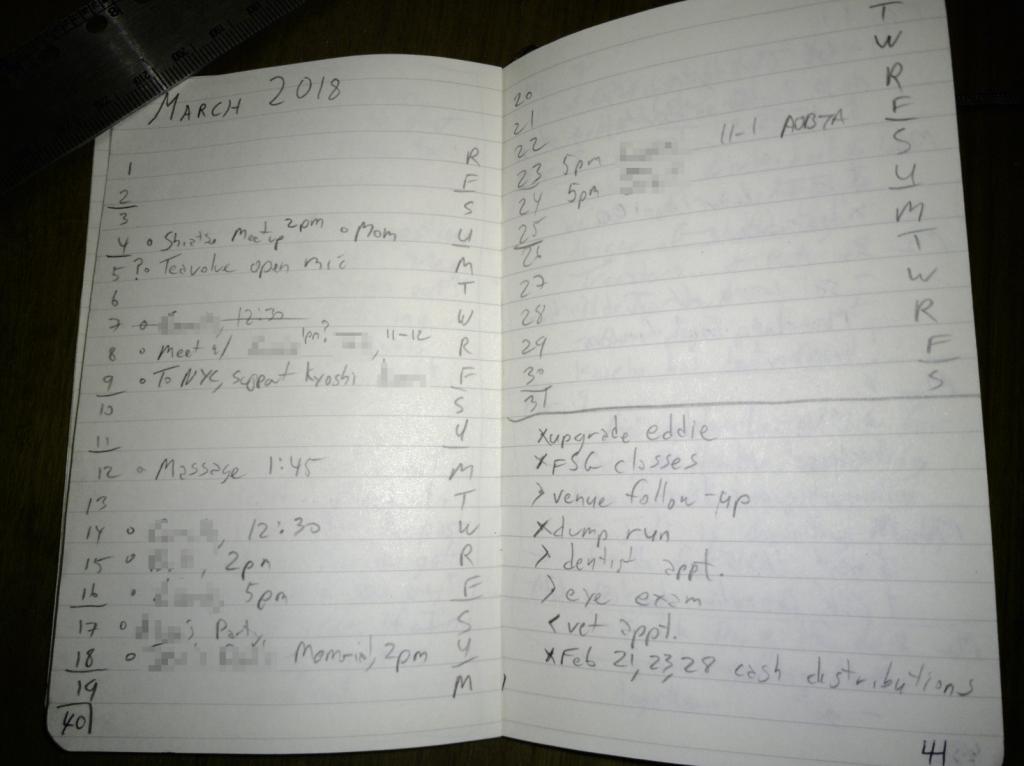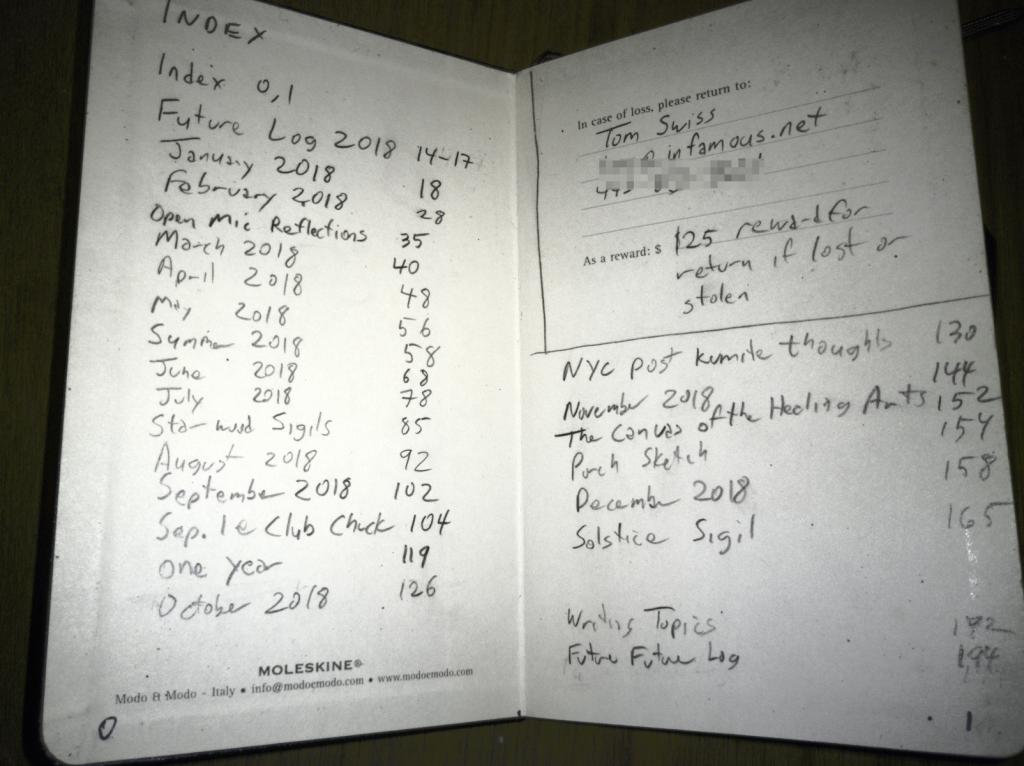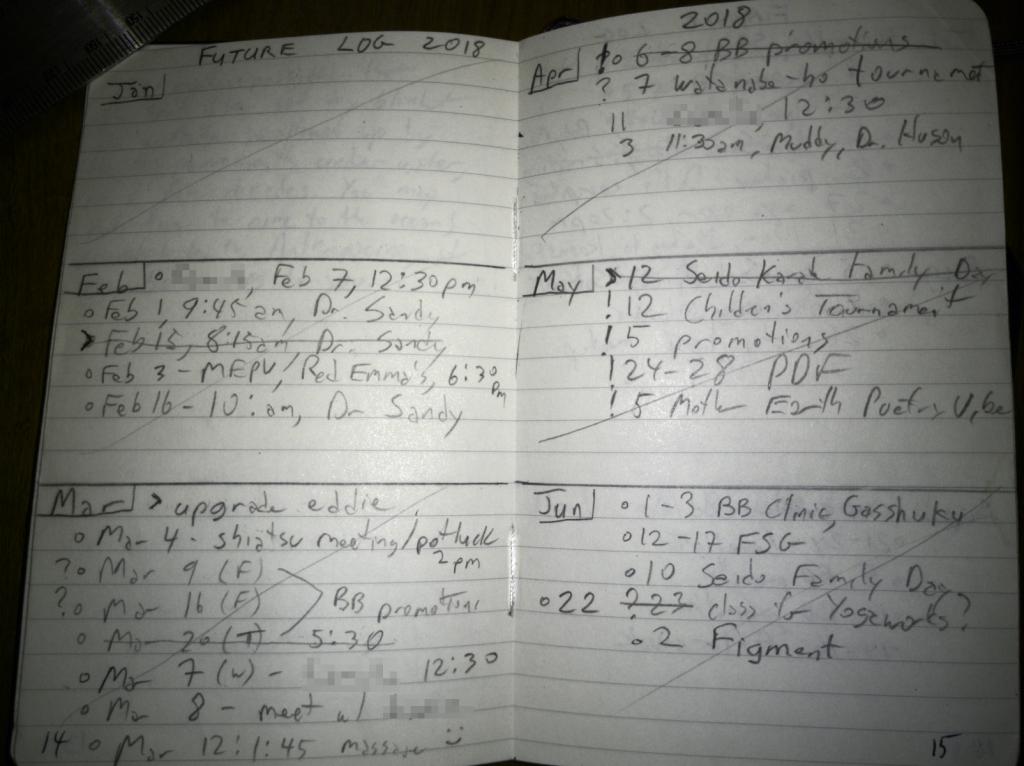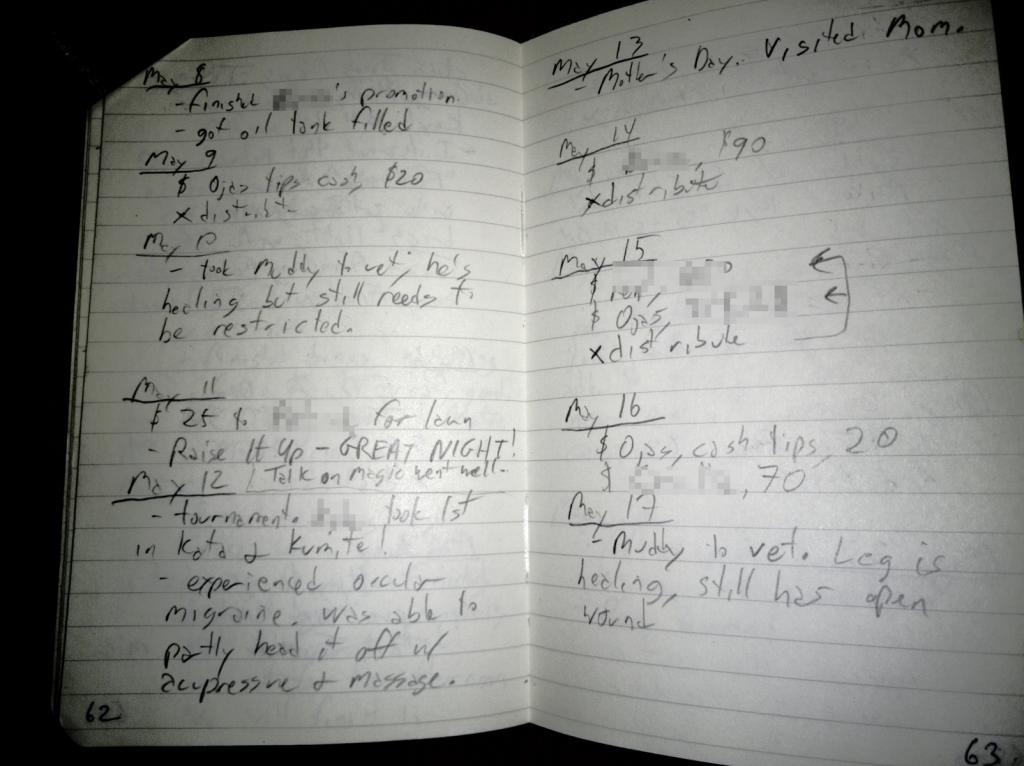If I say “magick”, you may immediately think of something supernatural and unusual and rare. But at its heart, magick is about getting stuff done. That’s especially true of “low magick” — or if you prefer “people’s magick” — such as witchcraft, as opposed to “high” or “elite” magick.
Even Aleister Crowley, arch high magickian (and elitist classist bastard) defined magick as “the Science and Art of causing Change to occur in conformity with Will” — i.e., getting done the stuff you want done. He gave as an example getting a work published:
(Illustration: It is my Will to inform the World of certain facts within my knowledge. I therefore take “magical weapons,” pen, ink, and paper; I write “incantations”—these sentences—in the “magical language” i.e. that which is understood by people I wish to instruct. I call forth “spirits” such as printers, publishers, booksellers, and so forth, and constrain them to convey my message to those people. The composition and distribution is thus an act of
MAGICK
by which I cause Changes to take place in conformity with my Will.)
So, yes, by Crowley’s example here every time I or one of the other Patheos Pagan writers actually gets a post up, it is a magickal event!
But seriously, folks: just as it is a genuine act of witchcraft to give a friend with an upset stomach a cup of ginger tea, and just as prosperity magick can bump up against matters as mundane as balancing your checkbook, there is a magickal attitude with which to approach your calendar and to-do list.
I once went to a festival workshop taught by Jeff “Magnus” McBride, a master of both ritual magick and stage magic. It being a festival, several people arrived on “Standard Pagan Time”, a few minutes late. Magus chided the latecomers, saying something to the effect that “To be a magician, you have to master time and space.”
Now, let me say that Magnus is on my A-list. As a performer he is a trouper, dedicated to the performer’s ethic that The Show Must Go On. As a teacher he walks his talk even in difficult circumstances.
But he is also on the complete opposite end of the order/chaos spectrum than I am. While I am a chosen plaything of Our Lady of Chaos, Eris Discordia, Magnus has joked that you could torture him by tilting the pictures on the wall a little bit out of level.
So in the spirit the proverb attributed to Niels Bohr that the “the opposite of a profound truth may be another profound truth”, let me offer that while a magickian may strive to master time and space, a magickian is also one who can dwell in ambiguity, uncertainty, and chaos.
And that gets to why I have tried and failed so many systems of organization. The day planner books and calendar websites and smartphone apps I’ve tried over the years all seem to have assumed that a certain amount or type of structure was already present in my life.
As the kids say, “Not so much.”
Enter the bullet journal. What’s great about it, is that this isn’t a set system, but a flexible and extendable framework in which one can evolve one’s own system.
The bullet journal was first developed by Ryder Carroll. There’s an official website, which I find so annoying in its orientation to video over text that I’ve never used it, and books and all sorts of merch you can buy if that’s your thing. There are productivity hucksters who will be glad to sign you up for their e-mail list and spam you with bullet journal tips every so often. And there’s a jargon around the thing that can sometimes be obfuscating.
But don’t let all that nonsense dissuade you.
Like all good ideas, it’s not the “official” version that really gives the thing value, it’s seeing how others adapt the idea once it escapes into the world.
I’m not going to try to give a complete how-to about bullet journaling here; I’d like to to tell you about my experience, and at the end I’ll link to a few other articles with more details.
You can start this any time, not just as the start of the year, but I started bullet journaling at the start of 2018. I grabbed a mostly-empty Moleskine pocket notebook (the 3 1/2 x 5 1/2 inch size) that a friend had given me a few years ago.
An important part of the foundation here is that this is an analog, dead-trees, paper and pencil exercise. Writing by hand gets into your nervous system in a way that typing doesn’t.
People neater than me might choose to use a fountain pen to make their bullet journal pretty, or use a set of colored markers and make it a craft project.
But mine is all about content. As you can see in the photos it’s ugly and practical — I use a cheap stubby plastic 0.7mm mechanical pencil, which fits perfectly along with the notebook into my everyday carry waist pack. (“Fanny pack”, to the vulgar).
(A tangential everyday carry tip: I bought a pack of these cheap pencils years ago, haven’t seen their like since and can’t remember who made them. But there are many plastic mechanical pencils where you can remove the eraser holder/lead advance button, cut down the body with a hacksaw, and re-insert the eraser holder. to make a sawed-off pencil for easy carrying.)
In my journal’s pages you’ll find appointments and to-dos and “rapid logging” recording of events; these are the core of the bullet journal approach.
You’ll also find accounting notes, because I found that it was a convenient place to record income from side jobs and leave myself to-dos about setting aside portions for taxes and savings.
And you’ll find poems and essay-type journal entries and even some chaos magic sigil work, because it turned out this little notebook was a convenient place for those too.
The key to allowing all these different things to peacefully coexist is remarkably simple: number every page of your notebook, keep a table of contents/index, and note the page numbers where content continue as you interleave topics.
For example, the index/table of contents at the start tells me that my daily log for July starts on page 78, the sigil sketches from the chaos magic workshop at Starwood start on page 85, the journaling I did on the train home from New York after my students’ black belt promotions is on page 130, and so on.
(As a software geek, I numbered the inside front cover as page 0 and the page facing it the more traditional page 1, and put my index on those two pages.)
Now, those sigil sketches on pages 85 and 86, for example, are right in the middle of my daily log for July. (We’ll get to what a “daily log” is in a minute.) In this case it’s a short interruption and I could just flip though them to get to the other side, but more clever is to note at the bottom of page 84 that the log resumes on page 87. (And, perhaps, note on page 87 that the log’s previous page is 84.)
The “official” bullet journal way to do this seems to be with a vertical bar, but an arrow from one number to the other is clearer to me.
If you’re a software geek, you may recognize that this is creating a paper version of a linked list. And indeed, the idea of threading in a notebook seems to have been invented by Carey Barnett in deliberate emulation of the linked list data structure; Carroll borrowed it for the bullet journal.
The combination of page numbers, index, and linking means that a bullet journal can interleave any number of different threads of content — “collections”, in the jargon — without having to divide the book ahead of time or allocate how many pages you will need for each section, just so long as they are aligned to page boundaries.
You can even link backwards — you might start some topic on the last page of the notebook as a convenient place, run out of room, and continue it on a preceding page.
What could be more friendly to the chaotically-inclined than that?
This is the key that breaks the bullet journal out of the fixed structure of day planner books. With it in mind, we can lay down a structure for the journal with the knowledge that it will not restrict us. We can depart from that structure at any point to include whatever we need, without breaking it.
Pretty neat!
With that big point in mind, here’s how my journal is laid out.
(Note that in these images, I’ve pixelized some names to protect privacy. Also I’ve adjusted contrast to make the pencil writing darker for the screen, which makes them look sort of weird. Consider it an antidote to the pages and pages about beautiful journals out there — if I can get away with one this ugly, you don’t have to make yours a craft project.)
Index
While bullet journaling tradition calls this an “index”, it’s really more of a table of contents, with entries for each collection. I put this on the inside front cover and facing first page, pages 0 and 1.
What if I ended up with more entries than I had room for? I could expand the index via the magic of “threading” described above: I’d take the next empty page in the notebook (or I could skip to the back, or anywhere there’s space) and continue the index there, and put the continuation page number next to the page number on page 1.
Logging
“Logging”, in bullet journal jargon, can refer both to planning future events and recording current ones. (Or, if one is a bit of a procrastinator, recording past ones. This still works if you get a day or two or even a week behind! Don’t worry. This is not a system that breaks if you miss a day.)
In my journal I have three different types of logs, the Future Log, the Monthly Logs, and the Daily Logs. In each of these, I recorded both to-dos and planned events. A few symbols — bullets, thus the “bullet journal” name — help organize them:
• To-Dos are marked with a small dot bullet
◦ Scheduled events are marked with a hollow circular bullet
When a to-do was accomplished, I turned that dot into an X. If it was scheduled — e.g., moved from a vague “do this sometime this month” in the Future Log to a specific day in the Monthly Log — I’d turn that dot into a <. If I migrated it — e.g., moved a to-do in one monthly log to a new month — I’d turn the dot to a >.
In the daily log, you also briefly log each day’s events and thoughts, giving each a hyphen bullet.
I also found it useful to add $ bullets for financial information, ! for important notes, ? bullets for things needing investigating, and a * (actually a star/pentacle, but Patheos won’t let me enter the Unicode character here) for priority to-dos.
I put a legend inside the back cover to keep the symbols straight.
Let’s look a little more at each of these types of logs.
Future Log (and Future Future Log)
The “Future Log” is for planning your upcoming year. (Or other period, you could do Future Logs for six month or two year periods, but year makes sense to me.) It has space for each upcoming month — if you’re starting your journal in the middle of the year, you just need slots for the months yet to come.
When I set up my journal at the start of the year, I gave 1/3 of a page for each upcoming month, and marked down events I already knew to schedule (like Starwood and the Free Spirit Gathering), and some to-dos I knew would come up (like upgrading my computer’s operating system, a semiannual chore). Over the course of the year, as things came up for future months, the Future Log is where they went.
As the future became the past, I found it useful to put a slash though months in my Future Log to highlight what was really “future”. It looks a little ugly, but that’s how I roll. Make it as ugly as you need to.
As the year got on and I started to think about 2019, that was outside the scope of my Future Log. So I added a Future Future Log at the back of the notebook. When I set up my new journal for 2019, I’ll copy entries from that into my new Future Log. (You don’t have to do a new journal each year, by the way; you can continue until you run out of space, or spread one year across several books, depending on how much content you have.)
Monthly Logs
 At the start of each month, I created a new Monthly Log, a space for events and to-dos for the month. I used two facing pages, with one line for each day, also noting the day of the week, with leftover space for to-dos. You might need more space.
At the start of each month, I created a new Monthly Log, a space for events and to-dos for the month. I used two facing pages, with one line for each day, also noting the day of the week, with leftover space for to-dos. You might need more space.
Any events or to-dos already logged in the Future Log for that month got carried over. I would go back through the Monthly and Daily Logs from the past month for unfinished to-dos and decide what to do about them; if they were unimportant I’d just cross them out, if they were important they’d be copied over.
This is another useful aspect of the bullet journal: rather than letting unfinished business lie about, it encourages you to decide to drop it. If it’s not worth taking a few seconds to manually copy, it’s not worth worrying about.
Daily Logs
Following on that come the Daily Logs, which make up the bulk of the journal.
These consist of a few lines for each day. Mostly it is either to-dos for the day, or that arise during the day for the near future, and which get a • bullet; or “rapid logging” for noteworthy things that happened that day or brief thoughts, and which get a hyphen bullet.
Part of the bullet journal method is that each event gets only a brief entry, no matter how significant. If you want to write a more traditional journal entry about a day, you can do that in a separate threaded connection, thanks to the magic of threaded collections.
In my first year I also used daily logs to record some financial information. I will probably set that up in a separate threaded collection in 2019, now that I have a better idea of what I want to do. That’s another strength of this system: you can revise your methods as you go.
If I have a to-do that comes up during a day but doesn’t get done, I can either deliberately schedule it by migrating it to the Monthly Log (or Future Log), or I can just let it float. If I get it done before the end of the month (and reviewing the Daily Log will remind me), I mark it complete then; if not, it either gets migrated to the new month, or dropped as unimportant.
Further Reading
There are plenty of articles on the web about bullet journaling. If this discussion has raised your interest, find more details here:
- WTF Is A Bullet Journal And Why Should You Start One? An Explainer, by
Rachel Wilkerson Miller and Ellie Sunakawa at Buzzfeed gives the basics. - Bullet Journal Setup Guide {Getting Started in 6 SIMPLE steps} at Just Bright Ideas shows how fancy you can get.
- Thorough Guide to the Bullet Journal System at Tiny Ray of Sunshine gets into the theory.



















